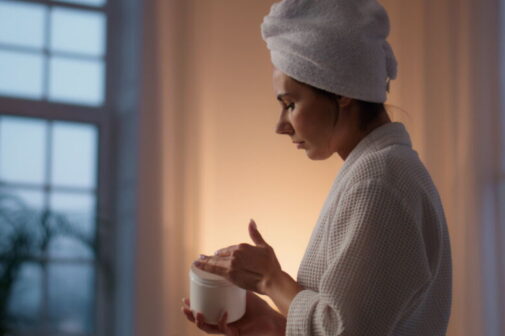How to limit your exposure to harmful chemicals at home

One reality of modern life is that many of the common substances you encounter on a daily basis can include chemicals that can be harmful to your health and damaging to our planet.
Some can cause short-term symptoms like asthma flare-ups or rashes on your skin. Others, though, can create long-term issues if you’re exposed to harmful chemicals over time, leading to diseases including cancer.
Communities of color can face particular challenges and have higher rates of health impacts from exposure to toxic chemicals as they’re more often located near manufacturing plants, factories, powerplants, landfills and other industrial processes that use harmful chemicals. Living near these facilities can expose people to chemicals that are linked to cancer, birth defects, chronic illnesses and more.
Because you likely spend a lot of time in your home, reducing your exposure to harmful chemicals in your living space is a good place to start.
“Knowing what’s in your products is really essential to keeping yourself safe,” Advocate Health Care and Aurora Health Care Vice President for Environmental Affairs and Sustainability Monica Nakielski says. “It can be challenging, but there are a lot of resources, though, to help you.”
For starters, here are three basic areas to think about your chemical exposure that are common to everyone.
Water
Everyone needs water, and that’s what can make potential contamination harmful.
Especially in cities with older infrastructure, lead can be an issue because it can leech into the water from older pipes made from the metal. It’s harmful to your health, especially for children.
Because lead is odorless and tasteless, the Environmental Protection Agency says the only way to know if it’s in your water is to have it tested. They offer some suggestions to do that here, starting with contacting your local water utility. In addition, both Chicago and Milwaukee have resources to help people who have lead pipes that connect houses to the city water supply.
In addition, you can learn more about how best to filter your water for all kinds of other chemicals by going to this filter buying guide.
Air
Air pollution is a clear health hazard, but the air inside your home can be harmful, too. The good news is that many of the solutions to clean the air in your home do not have to cost a lot of money. Here are some ideas.
- Quit smoking or vaping indoors: If you can’t quit smoking or vaping, do everything you can to avoid exposing others to your fumes. (You of course should quit smoking outdoors, too.)
- Clean your humidifier regularly: If you have a humidifier, clean it every three days to a week to prevent bacteria and mold growth.
- Replace your HVAC filter: It’s recommended to change your HVAC filter every few months. View instructions here.
- Ventilate while cooking: Frying foods and cooking without ventilation increases indoor air pollution. Turn on your stove’s ventilation hood or open windows when cooking.
- Address mold or damp spots in your home: If you smell anything musty around your home you should investigate. Common areas for mold growth include basements, showers, and around heating and cooling appliances.
- Invest in an air purifier or plants: Some of the best plants to filter air include the Spider plant, Boston fern, Bamboo palm, Snake plant, Peace lily, and Red-edged dracaena.
- Ventilate and use green cleaners when cleaning: Many conventional cleaners contain a plethora of chemicals that can contribute to air pollution in your home. Switching to green certified cleaners, where appropriate, and ventilating while cleaning can reduce air pollution.
Cleaners and other products
Another chemical that can get in the air are particles from common household cleaning products.
Nakielski suggests avoiding using chlorine and bleach-based cleaning products. Baking soda and water can help clean surfaces like counters. And you could use lemon juice and vinegar for surfaces that can be scratched, like chrome.
Plus, when you are cleaning, you want to cut down on kicking up dust.
“Dust is a way that chemicals that are passed to us, either via inhalation or ingestion,” Nakielski says.
Above all, carefully read the directions for any product you use. And while many cleaners advertise as being green or Earth-friendly, one label to look for is the Green Seal certification, and you can always check this resource from the EPA to help you buy greener cleaners.
Nakielski also recommends using the EWG Healthy Living App or DeTox Me app.
Are you trying to find a doctor? Look here if you live in Illinois. Look here if you live in Wisconsin.
Related Posts
Comments
About the Author
Mike Riopell, health enews contributor, is a media relations coordinator with Advocate Health Care and Aurora Health Care. He previously worked as a reporter and editor covering politics and government for the Chicago Tribune, Daily Herald and Bloomington Pantagraph, among others. He enjoys bicycles, home repair, flannel shirts and being outside.

















